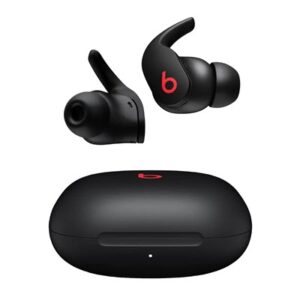Are you thinking about noise cancelling personal listening equipment but can’t decide between earbuds or headphones? You’re not alone. In this article, I’ll compare noise cancelling earbuds vs headphones to help you make the right choice.
I will discuss how noise cancelling technology works in each type of product and compare similarities and differences. Additionally, I will examine the difference in user experience for each type of listening gear.
I will also answer the question of whether noise cancelling earbuds vs headphones are best for blocking ambient noise.
Let’s get started!
How Does Noise Cancellation Work?
Noise cancelling earbuds and headphones use active noise cancellation (ANC) technology to block out the sounds around you. This different from headphones or earbuds that have noise isolating technology, which just provides a physical buffer.

This is an important distinction to keep in mind when comparing noise cancelling earbuds vs headphones. When you have ANC headphones or earbuds, they can cancel out background noise to about 20 decibels.
You have to understand sound wave science to recognize how noise cancellation works. With sound waves, there is air movement that creates compressions and rarefactions.
Think of the compressions and rarefactions as the waves you see in the ocean. When these air movements reach your eardrums, they create a vibration in your eardrum. Your brain processes this vibration and perceives it as sound in your brain.
With noise cancelling technology, microphones listen for and analyze all the waves of sound that are around you. Once that is done, an inverse of the wave is produced in the headphones.
The headphones or earbuds create a compression at the point where there is a rarefaction. They will also send a rarefaction any time there is a compression. These opposing sound waves cancel each other out resulting in virtually no sound.
If you choose wireless earbuds or headphones with noise cancellation, that battery life tends to be shorter. That is because the noise cancellation technology itself takes up energy from your device.
Keep this in mind if you’re using your noise cancelling headphones on busy days or on trips. You should be able to find out more specific information on your model of earbuds or headphones in the device manual.
Noise Cancelling Earbuds vs Headphones
Now let’s compare these two types of products to help you figure out which may be better for you:
Noise Cancelling Earbuds
Noise cancelling earbuds are fantastic for their portability and convenience. However, most of them aren’t able to match the type of noise cancellation you will get with noise cancelling headphones. There are earbuds that have excellent noise cancellation, but they have to be placed further into the ear.

Another benefit of noise cancelling earbuds is that you won’t have to deal with the headaches that can sometimes come from wearing headsets for long periods of time.
You will, however, have to keep your earbuds (especially the ones that go further into the ear) very clean. Since you’re putting these into your ears, you risk introducing bacteria that could cause infection.
Wearing earbuds or in-ear earphones for extended periods of time can cause impacted wax in your ear. Your ear wax is there to help collect and eliminate bacteria that isn’t supposed to be in your ear.
When you have earbuds or in-ear earphones in your ears for too much of the day and night, your ears never have a chance to expel this wax.
If you go with earbuds, you may find that they fall out sometimes, especially when you are exercising. Earbuds that go further into the ear are less likely to fall out and are better for vigorous activities.
If you’re on a budget and crave noise cancellation technology, earbuds are probably the right option for you. They are usually far less expensive than noise cancelling headset headphones.
Just be aware that earbuds aren’t able to create the kind of seal that noise cancelling headset headphones usually can.
Noise Cancelling Headphones
An advantage of noise cancelling headphones is that the padding around the earpieces also blocks out sound. This creates added noise cancellation simply because of the noise isolation they create.

The foam padding can also actually absorb sound waves. A drawback to noise cancelling headphones, is that they can be a bit on the heavier side. This means that they will be too clunky to use while exercising.
In general, it’s best to avoid wearing anything with noise canceling technology while outside. This is because you could put yourself in a dangerous situation if you cannot hear what is going on around you.
An example of this would be if you are on a run. For those situations, you should stick with regular personal listening technology.
Noise Cancelling Earbuds vs Headphones Compared
As we’ve seen here, noise cancellation earbuds vs headphones are both good options. The one that is best for you depends on your own personal preferences, needs, and budget.

Remember to look closely at what each model offers and how that relates to price, putting it in comparison with others on the market.
Make sure to follow all instructions the manufacturer provides when it comes to how to care for and clean your earbuds or headphones. This is especially important to avoid ear infections with earbuds.
One of the great things about noise cancellation technology is that you can usually keep the music at a lower volume. After all, it blocks out background and ambient noise.
Noise cancelling headphones are also famous for making you better able to hear every individual instrument in your music.
If you decide to go with the more lightweight and portable noise cancelling earbud, you will find that the sound in this area isn’t quite as crisp. Certainly, however, they are better than regular earbuds. This is especially the case if you go with a higher end model.
Want to learn more about noise cancellation technology. Check out my article on the topic here.







